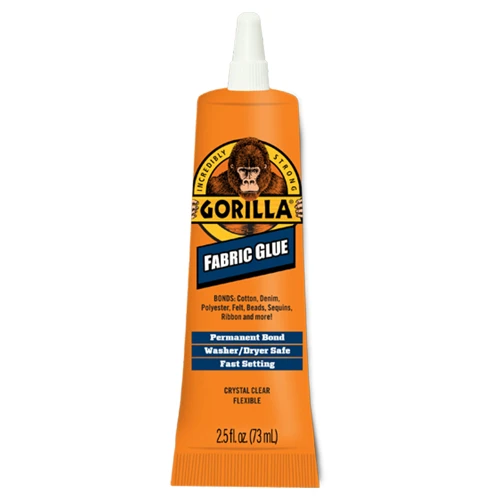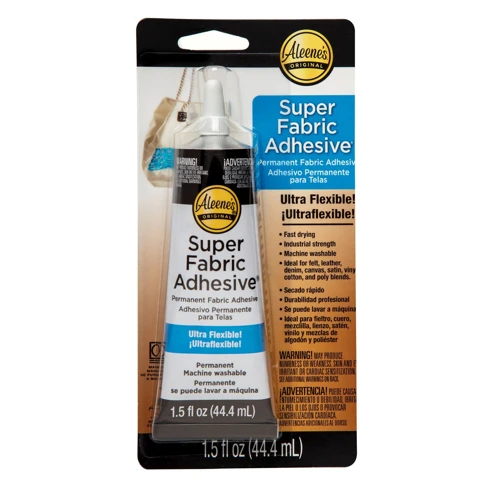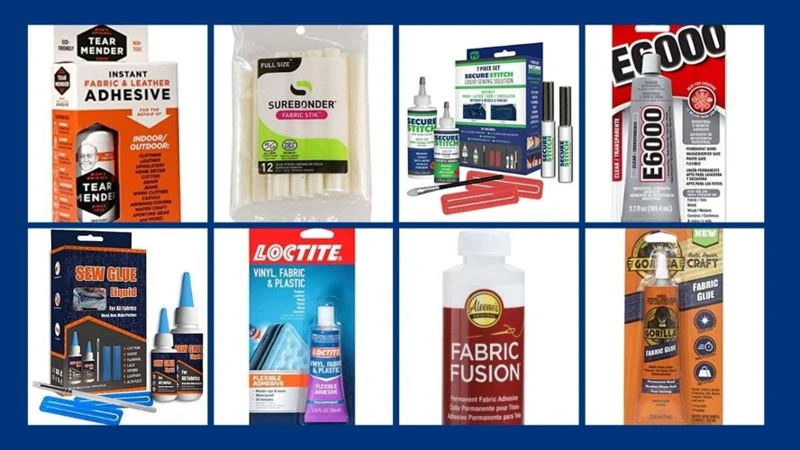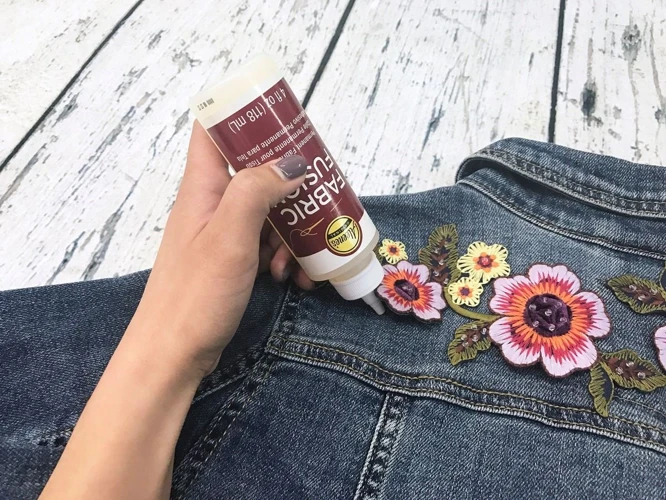What Is Fabric Glue?
Fabric glue is a specialized adhesive designed to bond fabric materials together. It’s a popular alternative to traditional sewing, offering a no-sew option for repairs, alterations, and crafts. Unlike standard glues, it’s formulated to remain flexible and withstand the wear and tear fabrics often endure.
How Strong Is Fabric Glue?
When it comes to the question, “how strong is fabric glue?”, the answer depends on the type of glue and the application. High-quality fabric adhesives can provide a bond that is robust and durable, capable of withstanding washing, ironing, and daily use. However, the strength of the bond also depends on proper application and fabric compatibility.
Choosing the Best Fabric Glue
Best Fabric Glue for Clothes
For clothing repairs or modifications, the best fabric glue for clothes is one that dries clear, remains flexible, and is washable. It should also be non-toxic and easy to apply, providing a secure bond without staining or damaging the fabric.
Best Permanent Fabric Glue
The best permanent fabric glue offers a long-lasting bond that’s resistant to washing and dry-cleaning. It’s ideal for attaching patches, hems, and applying embellishments that need to endure repeated wear and cleaning cycles.
Clear Drying Fabric Glue
Clear drying fabric glue is essential when working with lighter fabrics or when the adhesive might be visible. It ensures a clean, professional finish by drying transparent, leaving no unsightly residue.
Heavy Duty Fabric Glue
Heavy duty fabric glue is formulated to bond thicker materials like upholstery, canvas, and leather. Its superior strength makes it suitable for demanding applications where a strong, resilient bond is crucial.
Strongest Glue for Fabric
The strongest glue for fabric is typically a heavy-duty adhesive that can secure layers of material with a bond that’s nearly as strong as sewing. It’s perfect for outdoor gear and furniture where strength is paramount.
Very Strong Fabric Glue
Very strong fabric glue provides an exceptionally durable bond for fabrics under high stress. This type of adhesive is formulated to endure stretching, pulling, and heavy loads without peeling or detaching.
Practical Applications of Fabric Glue
Fabric Glue for Denim
Fabric glue for denim has to be resilient due to denim’s heavy weight and dense weave. The right adhesive for denim repairs will be durable enough to handle the rigors of daily wear and frequent washing.
Does Fabric Glue Work for All Fabrics?
While fabric glue is versatile, its effectiveness varies depending on the materials. Does fabric glue work for all fabrics? Not always. Sheer, highly textured, or wax-coated fabrics may require specific types of adhesives or different bonding methods.
Using Fabric Glue Effectively
How to Use Fabric Glue
Using fabric glue effectively starts with clean, dry fabrics. Apply the glue according to the manufacturer’s instructions, usually by spreading a thin, even layer on one surface. Press the two fabrics together firmly and allow ample time for the adhesive to cure.
Instructions for Securing Fabrics
- Read the glue’s instructions for application and drying times.
- Test the glue on a small fabric swatch to ensure compatibility.
- Apply the glue with precision to avoid overspreading.
- Clamp or weight the fabric if necessary to maintain contact while drying.
Maintaining Fabrics After Gluing
How to Remove Fabric Glue from Clothing
Accidents happen, and knowing how to remove fabric glue from clothing can save a garment from ruin. Gently scrape off excess dried glue with a dull knife, then treat the area with a commercial adhesive remover or rubbing alcohol. Always test a small, inconspicuous area first to avoid damage.
Caring for Glued Fabrics in Wash
To maintain the integrity of glued fabrics in the wash, follow the glue manufacturer’s care instructions. Typically, waiting for the adhesive to fully cure before washing and avoiding high heat can help preserve the bond.
The Durability of Fabric Glue
Is Fabric Glue as Good as Sewing?
Whether fabric glue is as good as sewing depends on the application. For temporary fixes or fabrics that are difficult to sew, glue can be an excellent solution. However, for structural seams or heavy-duty items, sewing may still be the superior choice.
Fabric Glue Versus Traditional Sewing Methods
Comparing fabric glue versus traditional sewing methods shows that each has its advantages. Glue provides a quick fix without the need for a needle and thread, while sewing offers unmatched strength for crucial seams. The best method often depends on the specific project and the user’s skills.
User Experiences with Fabric Glue
When it comes to adhesives, there are numerous options available for different purposes, each with its unique strengths and applications. If you’re working on a project that involves fabric, you might be wondering about the effectiveness of fabric glue. To give you a broader perspective on adhesive strengths, we invite you to explore our articles that delve into other types of glues. Learn about the general strength and uses of various adhesives by checking out our articles on how strong different glues are, the specific strengths of Flex Glue, and the impressive bonding capabilities of CA glue (cyanoacrylate). Each of these glues has unique properties that make them suitable for different tasks, including those that involve fabric.
Reviews: Success Stories and Tips
User reviews often share success stories and tips for using fabric glue. Many praise its convenience for quick hemming or patching, while others recommend specific brands for their longevity and strength. Always consider personal experiences when selecting a fabric adhesive for your project.



